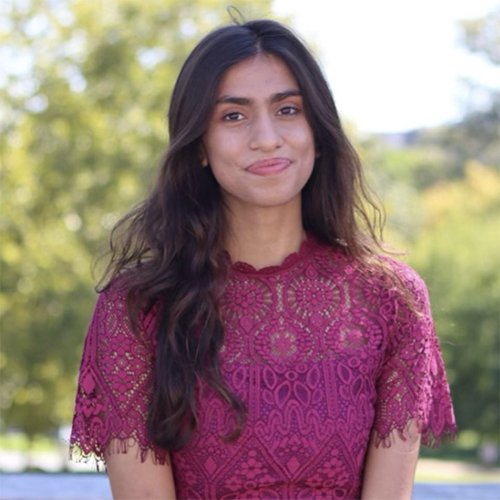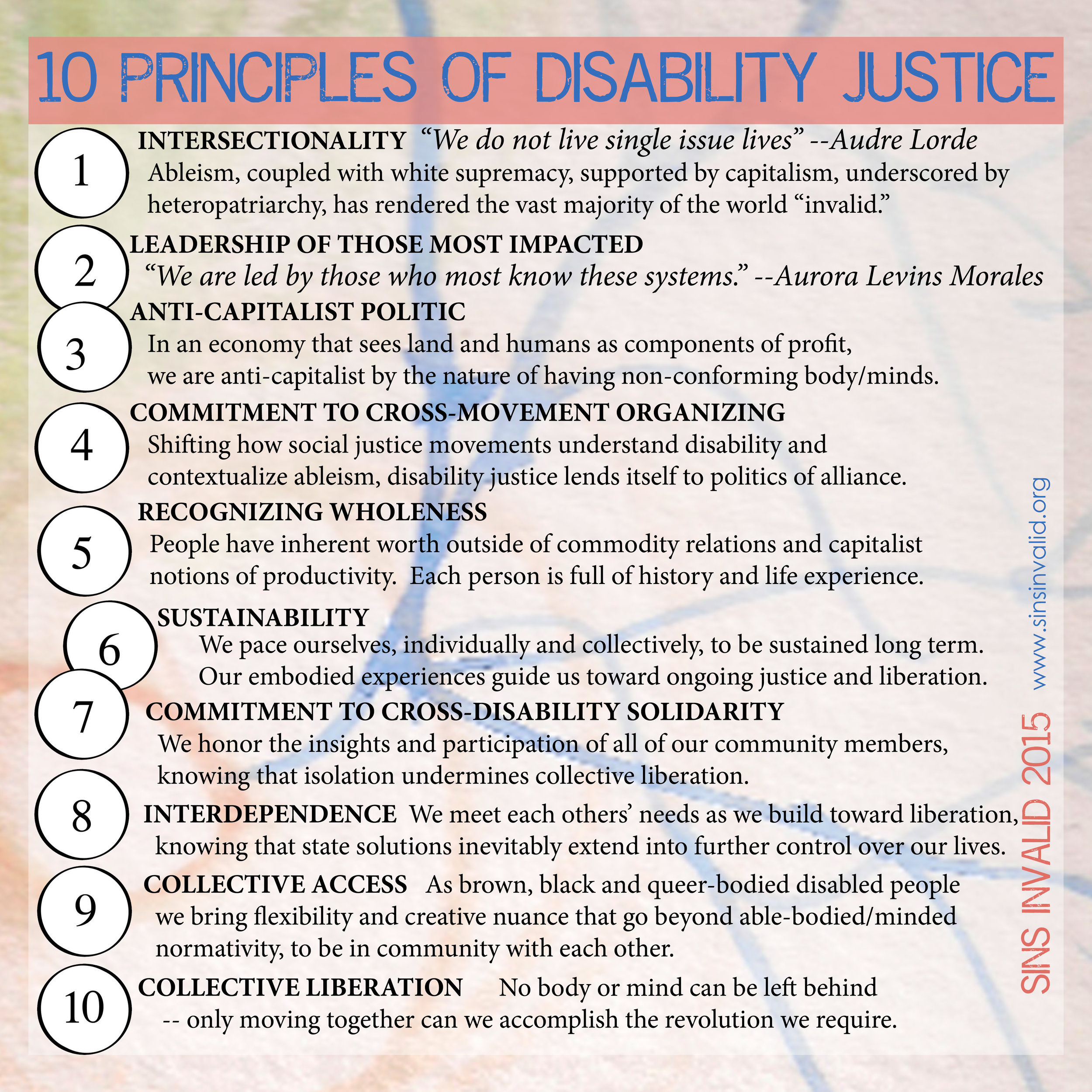Every July, we celebrate Disability Pride Month, which coincides with the anniversary of the Americans with Disability Act (ADA) on July 26th. This year will mark the ADA’s 34th anniversary. Growing up, it seemed that all conversations I heard about disability centered around rights and reasonable accommodations, which we often think of when we honor the hard-fought ADA (a landmark civil rights law that prohibits discriminatory practices against disabled people). Despite this work, there are gaps in this broad-spanning legislation that lead to persistent inequity for disabled people, particularly multiply marginalized disabled people.
How do we reckon with these persisting injustices? How do we reckon with the fact that disabled people of color, incarcerated disabled people, queer disabled people, and other multiply marginalized disabled folks are still not guaranteed basic protections, have significantly lower life expectancies and are more likely to live in poverty? Lastly, how do we move beyond individualism and foster interdependence by embracing community care and the importance of the relationships we forge?
Disability will be a part of everyone’s life at some point, and while laws like the ADA are incredibly valuable, they do not encompass the ranges of possibility beyond existing systems. They also largely lead to a focus on compliance as opposed to full inclusion and access. Thus, it is incredibly necessary to understand disability justice, a community-based framework that moves beyond equality-based models of rights, challenges notions of normality, and works to dismantle privilege at every level. Initially coined by queer, disabled people of color, Patty Berne, Mia Mingus, and Stacey Milbern (as part of Sins Invalid), the framework explores new possibilities for care.
Image description: Light pink, blue, and green infographic created by Sins Invalid in 2015. The infographic lists the 10 principles of disability justice and their definitions. The ten principles listed are as follows: intersectionality, leadership of the most impacted, anti-capitalist politic, commitment to cross-movement organizing, recognizing wholeness, sustainability, commitment to cross-disability solidarity, interdependence, collective access, and collective liberation. Linked is the full plain-text version.
In adopting this framework, we embrace aspects of intersectionality that are not often spoken about in traditional, rights-based models of disability. Disability justice highlights that oftentimes these traditional frameworks do not necessarily highlight or uplift the lived experiences of those who are multiply marginalized. For instance, people of color and queer people experience disability at higher rates; thus, we cannot overlook these populations nor can we deny the role of oppressive systems in creating disability. Disability justice highlights that we can only blossom together: there is no end to ableism without an end to systemic racism, sexism, queerphobia, xenophobia, capitalism, etc. and we must fight for liberation for all marginalized people. By centering disabled QTBIPOC (Queer, Trans, Black Indigenous People of Color), we work to value historically undervalued groups and thereby resist ableism through communal and interdependent liberation.
This framework is an integral part of our work at the National Partnership for Women & Families: ensuring that we center the voices of disabled women, disabled women of color, LGBTQ+ disabled folks, and disabled people in general when we talk about health and economic security allows us to work towards changing systems from their roots. NPWF has been moving toward a greater focus on intersectionality and systemic change in all of our advocacy areas ranging from maternal health to equitable pay. While NPWF adopts a disability justice framework in its work, we recognize that it is not a disability justice organization; our work is still largely rooted in the rights framework. However, understanding disability justice is critical to achieving equity and equality for all women.
With the ten principles of disability justice, we can be guided on ways to begin adopting these frameworks into our lives, families, communities, and organizations. Leah Lakshmi Piepzna-Samarasinha’s Audit Tool gives us some direction. Here are a few examples of action items we can move toward in our daily lives:
- Recognize that justice-work is not monolithic and begins in ourselves and in our communities. We should practice what it means to embody disability justice in our daily actions without co-opting these principles.
- Unlearn internalized ableism and be proactive in our collective quest for liberation. We can do so initially by discussing what disability looks like in spaces that we inhabit.
- Normalize conversations about disability, recognize disabled activists and center their work, and support disabled community members through resources or mutual aid.
- Understand that accessibility is not the end-all-be-all to disability justice, but improving digital access, ensuring that COVID-safety is a priority, and adapting physical spaces to be welcoming and inclusive are steps for solidarity within varying abilities and identities to grow.
In embodying these principles, we recognize that single-issue struggles do not exist and that all liberation is connected. By emphasizing these links between ableism and other systems of harm, we move beyond simply advocating for rights. We begin to recognize ways in which we can embody justice in our lives and challenge the systems that we have normalized. Working on creating access and moving towards justice is life-long. We must hold each other accountable as we unlearn internalized ableism in ourselves and in our communities so that we can build a world beyond just survival.
The author is grateful to Anagha Sreevals, Aimee Peoples, Marissa Ditkowsky, and Molly Kozlowski for their edits and input to this blog post.



